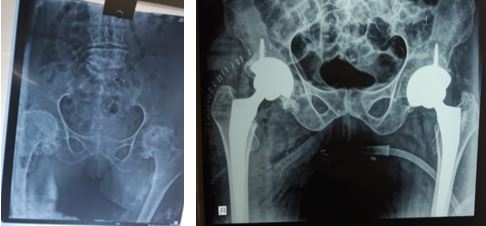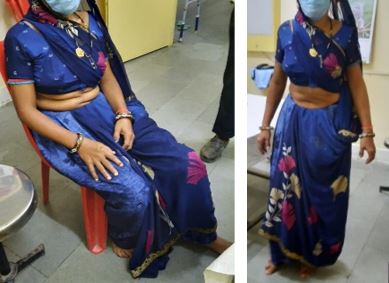Clinical and functional outcome of uncemented total hip replacement in patients with avascular necrosis of femoral head
Singh V1*, Bhinde S2, Patidar A3, Jain S4, Sharma S5
1* Vivek Singh, Professor, Department of Orthopaedics, RD Gardi Medical College, Ujjain, MP, India.
2 S Bhinde, Department of Orthopaedics, RD Gardi Medical College, Ujjain, MP, India.
3 A Patidar, Department of Orthopaedics, RD Gardi Medical College, Ujjain, MP, India.
4 S Jain, Department of Orthopaedics, RD Gardi Medical College, Ujjain, MP, India.
5 SK Sharma, Department of Orthopaedics, RD Gardi Medical College, Ujjain, MP, India.
Background: Avascular necrosis of femoral head is a common problem. New cases are now a days diagnosed early and treated early, because of Ayushman bharat yojna. It mostly affects the femoral head (hip joint). Its management can be conservative or invasive. [1-4]. Total hip arthroplasty is the treatment of choice for third and fourth stage avascular necrosis [5-8].
Material and Method: Fifty patients of Avascular necrosis of femoral head of stage III and IV are operated by uncemented total hip arthroplasty and their results were assessed by Harris hip score.
Results: The mean Harris hip score during preoperative stage was 33.27 and during postoperative stage was 91.60. Excellent results are seen in 44 patients, good results are seen in 6 patients, poor or very poor results are seen in none patients.
Conclusion: Current generation of uncemented implants provide satisfactory clinical and radiographic outcomes in intermediate duration of follow up in avn of hip.
Keywords: Avascular necrosis of femoral head, uncemented total hip arthroplasty
| Corresponding Author | How to Cite this Article | To Browse |
|---|---|---|
| , Professor, Department of Orthopaedics, RD Gardi Medical College, Ujjain, MP, India. Email: |
Singh V, Bhinde S, Patidar A, Jain S, Sharma S, Clinical and functional outcome of uncemented total hip replacement in patients with avascular necrosis of femoral head. ojmpc. 2022;28(1):44-47. Available From https://ojmpc.com/index.php/ojmpc/article/view/154 |




